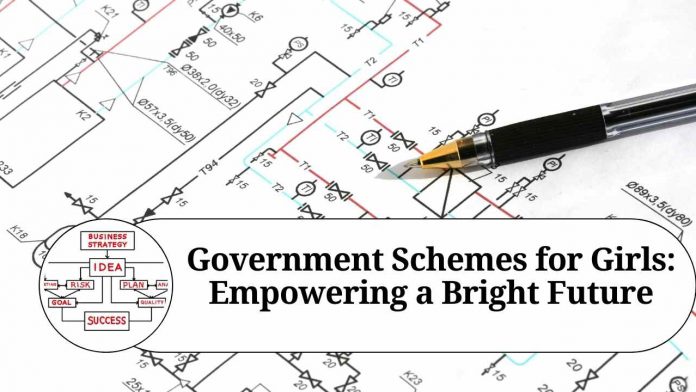Introduction:
In today’s world, gender equality and women’s empowerment have become pressing global issues. Governments across the globe recognize the need to uplift and empower girls, ensuring they have equal opportunities for growth and success. To address this imperative, many governments have implemented various schemes and initiatives specifically designed to support the development, education, and well-being of girls. These government schemes aim to break barriers, provide equal opportunities, and create a conducive environment for girls to thrive. In this blog post, we will explore some of the notable government schemes for girls and their significance in fostering a brighter future.
- Beti Bachao, Beti Padhao (Save the Daughter, Educate the Daughter): Beti Bachao, Beti Padhao is an ambitious initiative launched by the Government of India to address the declining child sex ratio and promote gender equality. The scheme emphasizes the importance of saving the girl child and ensuring her education. It aims to create awareness about the rights and importance of girls, prevent female foeticide, improve access to education, and provide support for girls’ higher education.
- Girls’ Education Challenge (GEC): The Girls’ Education Challenge, launched by the UK government, focuses on improving access to quality education for marginalized girls in developing countries. The program aims to reach over one million girls and aims to provide them with education opportunities, addressing barriers such as poverty, child marriage, and social norms that hinder girls’ education. The scheme supports innovative projects that provide girls with safe and inclusive learning environments, scholarships, mentorship, and vocational training.
- Let Girls Learn: The Let Girls Learn initiative, launched by the United States government, aims to empower adolescent girls around the world by expanding access to education. It addresses various challenges that hinder girls’ education, including cultural biases, poverty, and lack of infrastructure. The program promotes community engagement, provides educational resources, and supports policy changes to ensure girls have equal opportunities to learn, grow, and succeed.
- Kishori Shakti Yojana: Kishori Shakti Yojana is an Indian government scheme that focuses on empowering adolescent girls through education, health, and skill development. It aims to improve girls’ knowledge about health, hygiene, and nutrition while enhancing their life skills. The scheme provides vocational training, guidance on career choices, and awareness programs to promote girls’ empowerment and overall development.
- Malala Fund: The Malala Fund, established by Nobel laureate Malala Yousafzai, advocates for girls’ education worldwide. While not a government scheme, it highlights the importance of global efforts to support girls’ education. The fund works towards providing quality education, advocating for policy changes, and amplifying the voices of girls who are deprived of their right to education due to social, economic, or political barriers.
Conclusion:
Government schemes for girls play a vital role in empowering and uplifting girls across the world. By focusing on education, health, skill development, and awareness, these schemes aim to break the cycle of discrimination and ensure girls have equal opportunities to fulfill their potential. It is crucial for governments, organizations, and individuals to collaborate and support these initiatives to create a future where every girl can thrive, contribute, and shape the world. Empowering girls today will undoubtedly lead to a brighter and more inclusive tomorrow.
Read more useful content:
Frequently Asked Questions (FAQs)
Q1: What is the purpose of government schemes for girls?
A1: The purpose of government schemes for girls is to promote gender equality, empower girls, and provide them with equal opportunities for education, development, and well-being.
Q2: Are these schemes limited to specific countries?
A2: No, government schemes for girls are implemented in various countries across the world. Different governments recognize the importance of supporting girls and have implemented specific initiatives tailored to their respective contexts.
Q3: How do these schemes address barriers to girls’ education?
A3: Government schemes for girls address barriers to education through various means, such as providing scholarships, building schools and infrastructure, raising awareness about the importance of education, combating child marriage, and addressing cultural biases that hinder girls’ access to education.
Q4: How do government schemes promote girls’ empowerment beyond education?
A4: In addition to education, government schemes for girls often focus on their overall empowerment. They may provide health services, vocational training, life skills development, mentorship programs, and awareness campaigns on important issues such as hygiene, nutrition, and reproductive health.
Q5: Are these schemes only for underprivileged girls?
A5: While many government schemes for girls specifically target marginalized or underprivileged girls, they aim to benefit girls from all walks of life. The goal is to ensure that every girl, regardless of her background or social status, has equal opportunities and support for her development.
Q6: How can girls benefit from these schemes?
A6: Girls can benefit from these schemes by gaining access to quality education, scholarships, vocational training, healthcare services, mentorship, and a supportive environment that encourages their personal and professional growth.
Q7: How can individuals or organizations support these government schemes?
A7: Individuals and organizations can support these government schemes by raising awareness about their importance, volunteering their time and expertise, providing financial contributions, collaborating with implementing agencies, and advocating for policy changes that further promote girls’ empowerment.
Q8: How can girls and their families avail the benefits of these schemes?
A8: The specific process for availing the benefits of government schemes for girls varies from country to country. Typically, information about these schemes is made available through government websites, local educational institutions, community centers, and awareness campaigns. Families can reach out to relevant authorities or agencies to understand the application process and eligibility criteria.
Q9: Are these schemes effective in bringing about positive change?
A9: Government schemes for girls have shown positive impacts in improving girls’ access to education, health services, and overall empowerment. However, their effectiveness can depend on various factors, including proper implementation, adequate funding, community engagement, and continuous evaluation and improvement.
Q10: Can these schemes alone solve all the challenges faced by girls?
A10: While government schemes play a crucial role, they cannot solve all the challenges faced by girls on their own. Achieving gender equality and empowering girls require a comprehensive approach involving multiple stakeholders, including governments, civil society organizations, communities, families, and individuals. Collaboration, awareness, and sustained efforts from all sectors are essential for long-term and sustainable change.




















